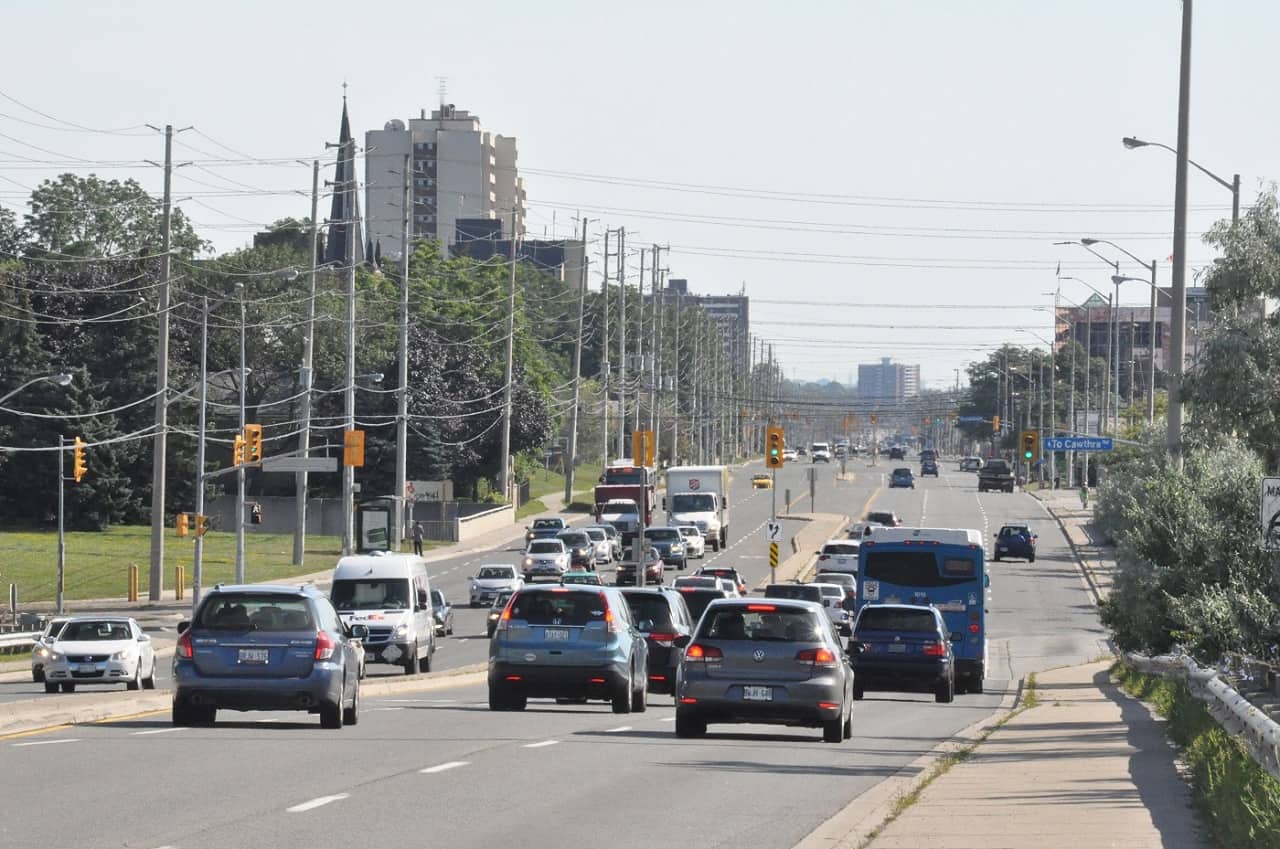Mississauga section of major bus rapid transit route gets the green light
Published May 5, 2022 at 12:20 pm

Plans for the east Mississauga portion of a bus rapid transit (BRT) route that will run nearly 50 kilometres along Dundas St. have been given the go-ahead by the Ontario government.
In an update on the status of the massive Dundas BRT project, officials in charge of the undertaking said this week the east Mississauga segment of the route has been given the green light to proceed by the provincial government.
When completed some years down the road, the 48-kilometre express bus route will cut an east-west path from the Kipling Transit Hub in Toronto to Hwy. 6 in Hamilton, by way of Mississauga and Halton.
It will run for 17 kilometres through Mississauga, including the just-approved Mississauga East portion of the route that runs seven kilometres from Etobicoke Creek in the east to Confederation Pkwy. in the west.
The project calls for about 20 kilometres of the route to be a bus-only lane or dedicated right-of-way, separate from other traffic.

Metrolinx, the provincial agency overseeing the Dundas BRT project and working with the City of Mississauga to complete it, released an Environmental Project Report (EPR) on the Mississauga East segment of the line on Feb. 22.
It contained an assessment of where that part of the project (Etobicoke Creek to Confederation Pkwy.) currently stands–and what it may look like upon completion–after a lengthy period of planning and public consultation.
From there, a distilled report went to residents and the larger community once again for further feedback before being reviewed for 35 days by the Province, which then gave the plan its stamp of approval.
Now, planning moves to the other three segments of the project, beginning with the Mississauga West (Confederation Pkwy. west to Ninth Line) and Toronto (Kipling Transit Hub to Etobicoke Creek) components.
The fourth segment comprises Halton and Hamilton (Ninth Line west to Hwy. 6).
Metrolinx officials say public sessions and feedback are crucial “because they often help to shape the end product. Some of the concerns revealed during community consultation particular to the Dundas BRT included potential for reductions in lane widths, how left- and U-turn lanes might be changed, traffic congestion, crosswalk and station platform safety for pedestrians and drivers, and impacts to property.”
Mississauga officials said earlier that the huge BRT project “will have an impact on the look, feel and operation of Dundas St. in the future.”
 Artist’s rendering shows what the Dundas BRT could look like when built. (Image: Metrolinx)
Artist’s rendering shows what the Dundas BRT could look like when built. (Image: Metrolinx)
Metrolinx says the design will allow for “faster and more reliable transit connections” across the region.
They said earlier that the Dundas BRT, first introduced to residents and businesses last April, will fill a significant transportation void in Mississauga and beyond.
“Right now, there’s no continuous east-west transit service along Dundas St., which impacts connectivity and accessibility for residents, workers and commuters,” Metrolinx officials said.
According to Metrolinx, the Greater Toronto and Hamilton Area welcomes some 110,000 new residents each year and it’s expected to be home to more than 10 million people by 2041.
INsauga's Editorial Standards and Policies